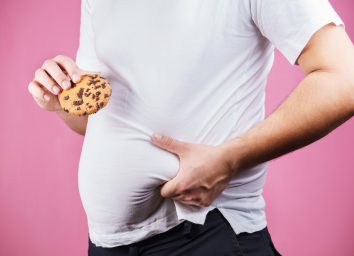4 Worst Baked Goods for Abdominal Fat

If you have a sweet tooth, you're probably looking for any way to have a delicious treat at some point throughout the day. Thanks to grocery stores, restaurants, bakeries, and even at-home recipes, it's hard to escape digging your teeth into a sugary baked good. However, as sweet as that sounds, dessert treats and baked goods can come with some negative impacts on your health, including an increase in abdominal fat.
With so many options to choose from (and a never-ending hankering for sweets), how will you know which baked goods to stay away from, especially if you're watching your abdominal fat? We spoke with dietitians from our Medical Expert Board to give us the rundown on what to say "no" to next time we're deciding on dessert. For more, check out The #1 Worst Breakfast for Abdominal Fat.
Cinnamon rolls
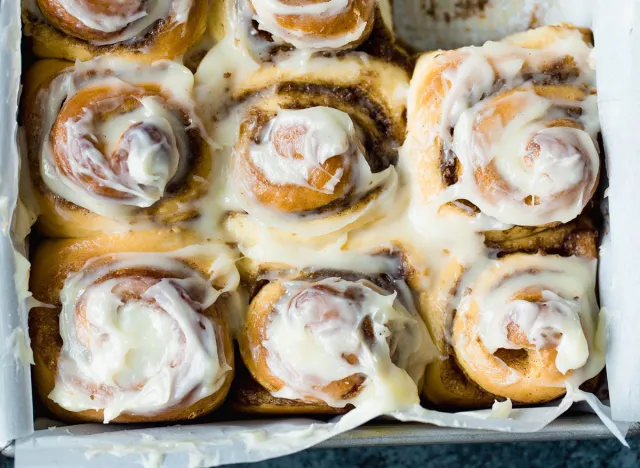
As delicious as they can be, cinnamon rolls are made with saturated fats such as butter or lard, white flour, and lots of sugar. A sugary glaze tops it off. Not only are the ingredients over the top, but typically speaking, cinnamon rolls are served in large portions, having you succumb to a heavier amount of all those ingredients.
"Since we tend to store fat in our midsection secondary to eating processed white foods and excessive amounts of sugar, cinnamon rolls might smell delicious but they are not helping us stay slim," says Amy Shapiro MS, RD.
Trans fat treats
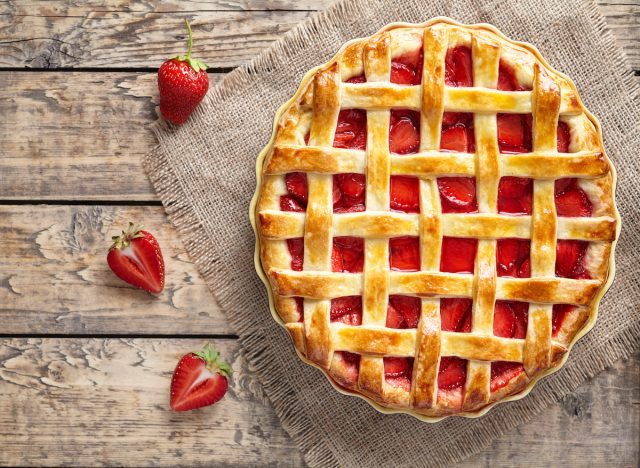
Generally speaking, there are two types of trans fats; man-made artificial, when hydrogen is added to liquid vegetable oils, and naturally occurring, made in the gut of some animals. When talking about baked goods, you're most likely to find man-made trans fats in the ingredients, also disguised as "partially hydrogenated oil."
Fructose-sweetened baked goods and commercial processed baked goods contain trans fat. Some examples include cakes, cookies, pie crust, dough, and crackers.
"Read the labels and avoid ingredients like partially hydrogenated oils, high-fructose corn syrup, vegetable shortening, and margarine," suggests Brittany Dunn, MS, RDN, CD,
Creme-filled baked goods
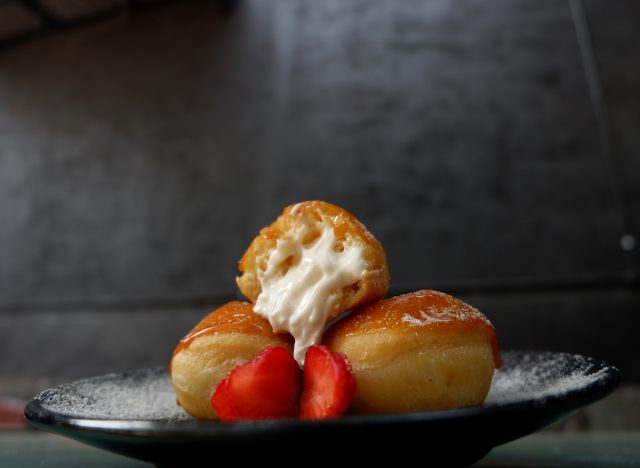
Creme-filled treats are made with a variety of processed ingredients including food colors, food dyes, sugar, bread conditioners, and flours.
"These items also tend to contain trans fats which not only get stored around our middle but they also increase our cholesterol levels," says Shapiro. "Excess sugar quickly gets stored around our middle and since these are often rich in sugar, we end up craving more and tend to eat more than one serving."
Refined grains
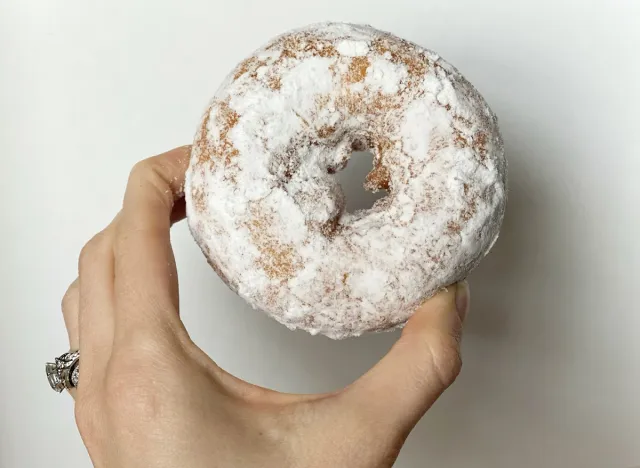
Grains are refined when manufacturers remove the bran and germ from them. Fiber and other nutrients are also removed.
"Higher intakes of refined grains lead to more visceral adipose tissue," says Dunn. "Weight maintenance and weight loss goals are better supported by incorporating whole grain options in your diet, and not just refined grains."
Examples of refined grain baked goods to stray away from include cakes, donuts, cookies, and white bread.
Tips for choosing baked goods.
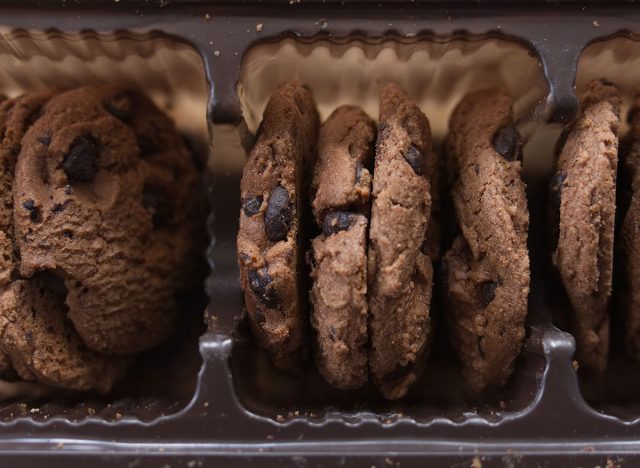
Choosing a baked good that doesn't weigh in on your abdominal fat almost seems like a lost cause. However, Dunn has some suggestions on how to still enjoy a treat:
- Be aware of boxed, commercially processed goods on shelves at the grocery store
- Check the ingredients list for trans fats: partially hydrogenated oil, margarine, or shortening
- Choose whole-grain options; if taste or texture is not as desirable, mix half whole wheat flour in
- Try making your own baked goods at home to have more control of the ingredients, this way, you can also account for diet restrictions, macronutrient content, allergies, and intolerances.


